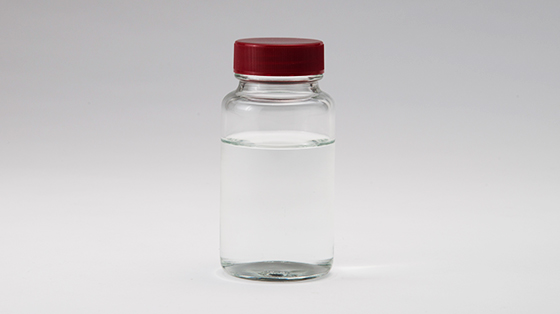Titanium Tetrachloride
Intermediate material for the production of titanium sponge.
Used in a wider range of fields.
Our titanium tetrachloride is manufactured through the titanium sponge production process. Our packaging containers are available in a variety of sizes to suit the transportation method.

Specs
| Grade | TiCl4 (%) |
Fe (ppm) |
V (ppm) |
Si (ppm) |
Sn (ppm) |
As (ppm) |
Sb (ppm) |
Hazen* color number |
|---|---|---|---|---|---|---|---|---|
| TLT-1 | 99.9min. | 10max. | 10max. | 5max. | 30max. | – | – | 20max. |
*According to the Chromaticity Indication Method of the American Public Health Association (APHA)
Container (packing)
| Container [liters] | Net weight [kg] |
|---|---|
| 2,000 | 2,100 |
| 5,000 | 7,500 |
| 6,000 | 10,000 |
| 12,000 | 19,000 |
Physical properties
| Molecular weight | 189.73 |
|---|---|
| Boiling point | 136.4℃ (1,013.25hPa) |
| Melting point | -25℃ |
| Specific gravity | 1.726 (15-20℃) |
| Vapor density | 197.4 (oxygen = 16) |
| Vapor pressure | logP=7.64433-1947.6/T (P:mmHg, T:K) |
| Critical temperature | 358℃ |
| Specific heat | 35.7 cal/mol°C (liquid) (13-99°C) |
| Viscosity | 0.826C.P (20℃) |
| Evaporation heat | 8.96kcal/mol (25℃) |
| Melting heat | 2.24kcal/mol |
| Thermal conductivity | 0.073kcal/m.hr.℃ |
| Surface tension | 34.03dyn/cm (13℃) |
| Dielectric constant | 2.83 (10℃), 2.79 (20℃) |
| Entropy | 60.4 ± 2 cal/mol°C (25°C, liquid) 84.4 ± 1 cal/mol°C (25°C, vapor) |
| Heat of formation | -198.5 ± 10 kcal/mol (°C, solid) 184.3 ± 10 kcal/mol (°C, gas) |
Chemical properties
- Reaction with water
Reacts strongly with water and hydrolyzes with a large amount of heat generation.
Example: TiCl4+H2O→HCl+Ti(OH)nClx - Reaction with alcohol
Example: TiCl4+4ROH+4NH3→Ti(OR)4+4NH4Cl - Corrosivity
Almost no corrosiveness to iron at room temperature. It is quite corrosive at 200°C or higher.
Corrosion by HCI formed by the reaction with moisture is significant, and moisture in pipes and containers should be carefully removed.
